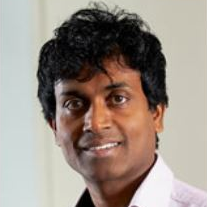Computer Graphics, Image Processing and Artificial Intelligence
A special issue of Mathematics (ISSN 2227-7390). This special issue belongs to the section "Computational and Applied Mathematics".
Deadline for manuscript submissions: closed (28 February 2022) | Viewed by 53009
Special Issue Editors
2. Department of Information Science, Faculty of Sciences, Toho University, 2-2-1 Miyama, Funabashi 274-8510, Japan
Interests: artificial Intelligence; soft computing for optimization; evolutionary computation; computational intelligence
Special Issues, Collections and Topics in MDPI journals
Interests: geometric modelling; computer animation; computer graphics; applications of ODEs and PDEs in geometric modelling and computer animation
Special Issues, Collections and Topics in MDPI journals
Interests: geometric design; computer graphics; machine learning; visualisation; mathematical modelling
Special Issues, Collections and Topics in MDPI journals
2. Department of Information Science, Faculty of Sciences, Toho University, 2-2-1 Miyama, 274-8510 Funabashi, Japan
Interests: swarm intelligence and swarm robotics; bio-inspired optimisation; computer graphics; geometric modelling
Special Issues, Collections and Topics in MDPI journals
Special Issue Information
Dear Colleagues,
Computer graphics, image processing and artificial intelligence are three of the most popular, exciting, and hot domains in the intersection of mathematics and computer science. These three areas share a broad range of applications in many different fields, and new impressive developments are arising every year. This Special Issue is aimed at providing a forum for discussion of new techniques, algorithms, methods, and technologies in any such areas, as well as their applications to science, engineering, industry, education, health, and entertainment. The interplay between any two of these areas is also of interest for this Special Issue.
This Special Issue will be mainly based on the selected papers from the 2nd International Workshop on Computer Graphics, Image Processing and Artificial Intelligence, CGIPAI-2021, held in Krakow (Poland), as a part of the International Conference on Computational Sciences (ICCS-2021). However, it is also open to researchers and practitioners working in these areas and submitting papers from outside this workshop.
We invite prospective authors to submit their contributions for fruitful interdisciplinary cooperation and exchange of new ideas and experiences, as well as to identify new issues and challenges and to shape future directions and trends for research in computer graphics, image processing, and/or artificial intelligence.
Potential topics include but are not limited to:
- Geometric and solid modelling and processing;
- CAD/CAM/CAE;
- Curve/surface reconstruction;
- Computer graphic techniques, algorithms, software, and hardware;
- Computer animation, video games;
- Virtual/augmented reality, virtual environments, autonomous agents;
- Computer graphics applications (science, engineering, education, health, industry, entertainment);
- Image processing techniques;
- Image processing processes (e.g., image denoising, image deblurring, image segmentation, image reconstruction, depth estimation, 3D surface restoration);
- Image processing applications;
- Evolutionary and nature-inspired algorithms (evolutionary programming, genetic algorithms);
- Neural networks, machine learning, deep learning, and data mining;
- Swarm intelligence and swarm robotics;
- Bio-informatics and bio-engineering;
- Natural computing, soft computing, and evolutionary computing;
- Artificial intelligence applications;
Interplay among some of the previous areas.
Prof. Dr. Akemi Galvez Tomida
Dr. Lihua You
Prof. Dr. Hassan Ugail
Prof. Dr. Andres Iglesias Prieto
Prof. Dr. Alexander Malyshev
Guest Editors
Manuscript Submission Information
Manuscripts should be submitted online at www.mdpi.com by registering and logging in to this website. Once you are registered, click here to go to the submission form. Manuscripts can be submitted until the deadline. All submissions that pass pre-check are peer-reviewed. Accepted papers will be published continuously in the journal (as soon as accepted) and will be listed together on the special issue website. Research articles, review articles as well as short communications are invited. For planned papers, a title and short abstract (about 100 words) can be sent to the Editorial Office for announcement on this website.
Submitted manuscripts should not have been published previously, nor be under consideration for publication elsewhere (except conference proceedings papers). All manuscripts are thoroughly refereed through a single-blind peer-review process. A guide for authors and other relevant information for submission of manuscripts is available on the Instructions for Authors page. Mathematics is an international peer-reviewed open access semimonthly journal published by MDPI.
Please visit the Instructions for Authors page before submitting a manuscript. The Article Processing Charge (APC) for publication in this open access journal is 2600 CHF (Swiss Francs). Submitted papers should be well formatted and use good English. Authors may use MDPI's English editing service prior to publication or during author revisions.
Keywords
- Computer graphics
- Geometric modelling
- Curves and surfaces
- Image processing
- Image reconstruction
- Visualisation
- Artificial intelligence
- Machine learning
- Deep learning
- Bio-inspired computation
- Swarm intelligence






